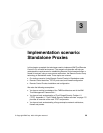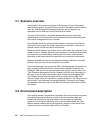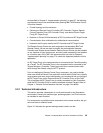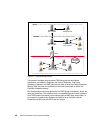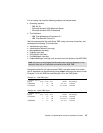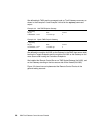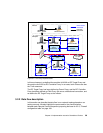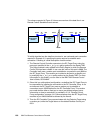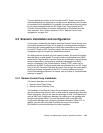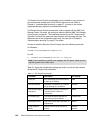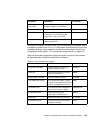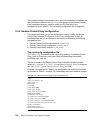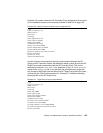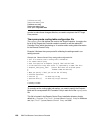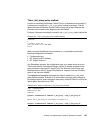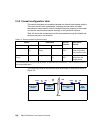Chapter 3. Implementation scenario: Standalone Proxies 101
The ports defined as random on the Controller and RC Target Proxy could be
customized specifying a single port or a range of ports, depending on the number
of connections to be established. For example, we could restrict the ports usage
for the communication between the RC Target Proxy Parent and all the RC
Controller Proxies Children, so that the configuration on the firewall could be
more restrictive. This is further explained in 3.3.2, “Remote Control Proxy
configuration” on page 104.
3.3 Scenario installation and configuration
In this section, we describe the steps to install the Remote Control Proxies in the
environment presented in Figure 3-2 on page 99, including general installation
instructions and a table containing the information needed during the installation
for both RC Target and RC Controller proxies. We also provide some
configuration steps to complete the installation procedure.
Our testing scenario contains only one firewall. However, this scenario could be
extended with a second firewall. This would create a demilitarized zone (DMZ)
where the RC Target and RC Controller Proxy are not allowed to connect directly
across multiple zones. In this case we could take advantage of the Relay
function, provided by Tivoli Firewall Security Toolbox (TFST), which can be
installed on the DMZ. The Relay would pass the information from the RC Target
Proxy to the RC Controller Proxy and vice versa. Even though this new scenario
would use the Relay component of the TFST, it is still considered a Remote
Control StandAlone environment. For details, refer to Chapter 2, “Implementation
planning” on page 57.
3.3.1 Remote Control Proxy installation
This section describes how to install:
Remote Control Target Proxy
Remote Control Controller Proxy
The installation of the Remote Control Proxy component must be done locally
and can be done using either the GUI or silent methods, depending on the Install
Shield mechanism. You can also take the advantage of other Tivoli Applications,
such as IBM Tivoli Configuration Manager, by creating your own package with
the Software Package Editor. For more information, refer to the
IBM Tivoli
Configuration Manager User’s Guide for Software Distribution
, SC23-4711. In
addition, you can refer to the
IBM Tivoli Remote Control User’s Guide
,
SC23-4842 for the information about the silent installation.



